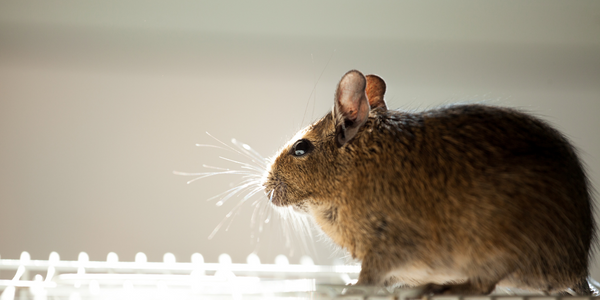Innovating CCR diving systems with SolidWorks Premium
Customer Company Size
SME
Region
- America
Country
- United States
Product
- SolidWorks Premium
- SolidWorks Simulation
- SolidWorks Flow Simulation
- SolidWorks eDrawings
- CAMWorks
Tech Stack
- SolidWorks 3D CAD
- NIKA Fluid Solutions
- Pro/ENGINEER CAD
Implementation Scale
- Enterprise-wide Deployment
Impact Metrics
- Cost Savings
- Innovation Output
- Productivity Improvements
Technology Category
- Analytics & Modeling - Predictive Analytics
- Application Infrastructure & Middleware - Data Visualization
- Functional Applications - Product Lifecycle Management Systems (PLM)
Applicable Industries
- Consumer Goods
- Marine & Shipping
Applicable Functions
- Product Research & Development
- Quality Assurance
Use Cases
- Digital Twin
- Predictive Maintenance
Services
- Software Design & Engineering Services
- System Integration
- Training
About The Customer
Steam Machines, Inc. (SMI) is a pioneering company in the development of closed-circuit rebreather (CCR) diving systems for the recreational market. Founded by Peter Readey, SMI has been at the forefront of making advanced diving technology more accessible and affordable. The company's innovative PRISM™ CCR system allows divers to 'rebreathe' their own air by scrubbing out carbon dioxide, significantly reducing the cost of each unit from $18,000 to $7,800. This cost reduction was achieved through breakthroughs in the use of advanced composite materials. SMI's commitment to innovation and quality has made it a leader in the recreational diving industry.
The Challenge
Steam Machines, Inc. (SMI) faced the challenge of needing advanced design analysis tools and a cost-effective design platform to streamline their product development and manufacturing process. The company initially used Pro/ENGINEER CAD software but found it lacking in computational flow dynamics (CFD) capabilities. SMI needed a solution that could support every step of their product development process, from conceptual design to manufacturing, while also reducing costs and improving efficiency. The company aimed to innovate their closed-circuit rebreather (CCR) diving systems, making them more affordable and accessible to a wider market.
The Solution
SMI selected SolidWorks Premium as their design platform due to its ease of use, compatibility with other software applications, and advanced mold development and analysis tools. The company also integrated SolidWorks Simulation for structural analysis and SolidWorks Flow Simulation for computational flow dynamics (CFD) analysis. This comprehensive suite of tools allowed SMI to support every step of their product development process, from conceptual design and simulation to validation, testing, and manufacturing. The use of SolidWorks software enabled SMI to develop sophisticated manufacturing techniques, produce limited runs of advanced diving technology components, and avoid repetitive prototyping. The integrated design analysis tools provided by SolidWorks allowed SMI to validate part and assembly performance on the computer, enabling them to go straight to production without the need for prototypes.
Operational Impact
Quantitative Benefit

Case Study missing?
Start adding your own!
Register with your work email and create a new case study profile for your business.
Related Case Studies.
.png)
Case Study
Improving Vending Machine Profitability with the Internet of Things (IoT)
The vending industry is undergoing a sea change, taking advantage of new technologies to go beyond just delivering snacks to creating a new retail location. Intelligent vending machines can be found in many public locations as well as company facilities, selling different types of goods and services, including even computer accessories, gold bars, tickets, and office supplies. With increasing sophistication, they may also provide time- and location-based data pertaining to sales, inventory, and customer preferences. But at the end of the day, vending machine operators know greater profitability is driven by higher sales and lower operating costs.

Case Study
Series Production with Lot-size-1 Flexibility
Nobilia manufactures customized fitted kitchens with a lot size of 1. They require maximum transparency of tracking design data and individual processing steps so that they can locate a particular piece of kitchen furniture in the sequence of processes.

Case Study
American Eagle Achieves LEED with GE LED Lighting Fixtures
American Eagle Outfitters (AEO) was in the process of building a new distribution center. The AEO facility management team decided to look at alternate options for lighting layout that could provide energy and maintenance savings. AEO would need a full-time maintenance employee just to replace burned-out fluorescent tubes.

Case Study
Revolutionizing Rodent Control
From pet- and child-safe traps, to touch-free and live-catch rodent control solutions, Victor continues to stay committed to producing superior products that meet the varying needs of today’s pest control professionals. And, with a long standing history supporting customers in the food processing, service, and retail settings, Victor knew that strict regulations were costing organizations thousands of dollars in excess overhead trying to manage their rodent-control solutions. Trap inspections in these environments are often difficult and time consuming, requiring personnel to manually check a trap’s status multiple times per day, amounting to over six hours of manual labor. Victor is looking for an innovative way to increase operational efficiencies with the use of technology.




